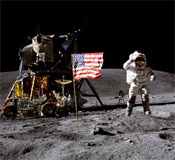United States National Aeronautics and Space Administration
Document Type
Article
Date of this Version
2015
Citation
The Journal of The Textile Institute, 2015
Abstract
Super pressure balloons (SPBs) are used by the National Aeronautics and Space Administration (NASA) for ultra-long duration ballooning (ULDB) missions which carry various scientific explorations to support space and earth sciences research activities. The resistance to photo-degradation of load-bearing braided tendons of SPBs is critical to the success of ULDB missions. Recognizing the critical need to improve UV and visible light (UV–Vis) protective performance of p-phenylene-2, 6-benzobisoxazole (PBO) braids, North Carolina State University and NASA’s Balloon Program collaborated to investigate the effectiveness of sheath extrusion method in improving the UV–Vis resistance of tendons. This study included two PBO tendon types – 48,000 (48k) denier tendons and 72,000 (72k) denier tendons. Using a sheath extrusion method, the tendons were covered with UV protective sheath of low-density polyethylene containing two types of UV inhibitors – TiO2 rutile nanoparticles and PolyOne PE White CC®. Bare and sheathed tendons were subjected to artificial UVB exposure in the lab as well as to both high altitude and ground exposure during flight missions conducted by NASA. Protection against radiation exposure was evaluated by determining the loss of tensile strength after exposure. UV–Vis protection of tendons improved with an increase in sheath thickness as well as UV inhibitor content in the sheath. The results also showed that 72k denier braids had higher resistance against UV degradation compared to 48k denier braids. In-flight exposure results confirmed the comparative UV protective performance of tendons exposed to accelerated artificial UVB exposure in lab. 72k denier tendon covered with sheath containing 10% PE White CC® (sheath thickness of 0.37 mm) experienced the lowest strength loss among all tendon samples to high-altitude exposure during flight missions. The study has also utilized UV–Vis transmittance of the sheath covering the braids as a method of evaluating the performance of the protective sheaths.


Comments
U.S. Government Work